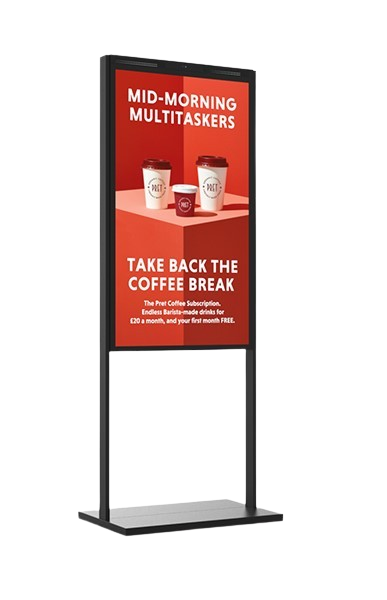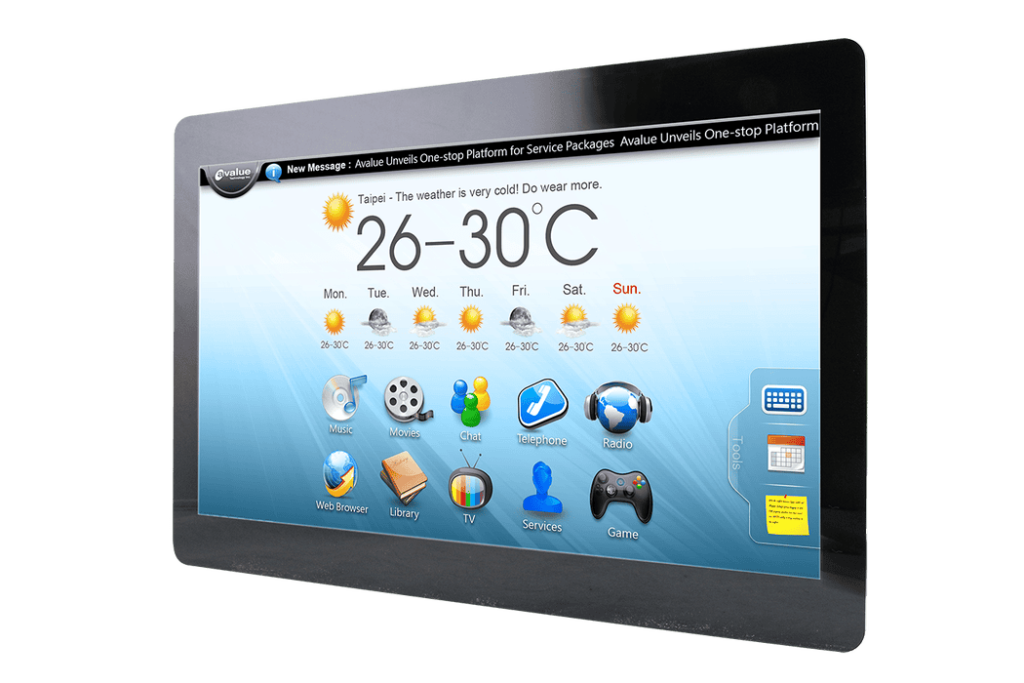+44 (0)1634 791600
info@crystal-display.com
Newsletter Sign Up!
+44 (0)1634 791600
info@crystal-display.com


As the medical industry continues to advance, so do the requirements for medical displays. The demand for bar or stretch-type displays, as well as round and square-shaped options, has increased significantly, enhancing both the usability and aesthetics of modern medical equipment. These cutting-edge displays are now fundamental in patient monitoring, diagnostics, and surgical systems, ensuring healthcare professionals have access to the best visual tools for accurate and efficient patient care.
At Crystal Display Systems (CDS), we remain at the forefront of these advancements, closely monitoring industry trends to deliver state-of-the-art medical display solutions. Below, we explore the top five trends shaping the future of medical display technology and how they are transforming healthcare environments.
The integration of multi-touch functionality has revolutionized medical devices, making touchscreens an essential component in healthcare environments. These advanced touch interfaces allow fast, precise, and intuitive navigation, enabling healthcare professionals to interact seamlessly with diagnostic and monitoring systems.
One of the most critical innovations in this space is gloved touch operation, ensuring that medical staff can operate displays effortlessly while wearing latex or nitrile gloves. This feature is especially valuable in operating rooms, laboratories, and intensive care units, where hygiene and safety are paramount.
Key Benefits:
✔ Improved Efficiency: Touch-based controls eliminate the need for additional input devices, such as keyboards and mice, reducing clutter and streamlining workflow.
✔ Enhanced Hygiene: Fewer physical touchpoints minimize the risk of contamination, contributing to infection control.
✔ Seamless Operation: Designed to be highly responsive to medical gloves, allowing uninterrupted workflow in sterile environments.
As medical professionals increasingly rely on digital interfaces, touch-based interaction is becoming a cornerstone of modern medical device design.
The demand for high-resolution medical displays continues to rise as healthcare professionals require precise and accurate imaging for diagnostics and surgical procedures.
For portable diagnostic equipment, compact and lightweight displays with ultra-high resolutions are essential. Clinicians need to experience the same level of clarity and detail as they would on larger hospital-based screens, enabling accurate assessments even in mobile healthcare settings.
In hospital and clinic environments, the adoption of Ultra High Definition (UHD) and 4K displays is accelerating, particularly in applications such as:
🔹 Endoscopy and Radiology – High-resolution imaging is crucial for identifying minute details in diagnostic scans.
🔹 Robotic Surgery – Surgeons require real-time, high-fidelity visuals to perform minimally invasive procedures with precision.
🔹 Medical Training & Collaboration – Large screens facilitate team-based diagnostics and enhance educational experiences for medical trainees.
Popular Screen Sizes in the Medical Field:
🔹 21 to 55 inches – Ideal for diagnostic and imaging applications.
🔹 Larger screens – Used for group discussions, procedural collaboration, and medical education.
Key Benefits:
✔ Enhanced Image Clarity: Higher pixel density enables doctors to detect subtle details in medical scans.
✔ Improved Decision-Making: Clearer visuals contribute to more accurate diagnoses and treatments.
✔ Better Collaboration: Larger screens allow multi-disciplinary teams to work together efficiently.
As medical imaging technology advances, high-resolution displays are becoming a necessity rather than a luxury in healthcare settings.
Medical equipment is subjected to continuous use in demanding environments, making durability and safety essential factors in display technology. Modern medical displays now feature:
🔹 Antimicrobial Coatings – Reduces bacterial growth, ensuring a more hygienic surface.
🔹 Scratch-Resistant Glass – Protects against accidental damage from frequent cleaning and handling.
🔹 Edge-to-Edge Glass Designs – Improves aesthetics and allows for easier cleaning and disinfection.
Given the need for rigorous infection control, medical displays are designed to withstand frequent sterilization using hospital-grade disinfectants without degrading in quality. These enhanced durability features not only improve longevity but also help maintain safety and compliance with strict medical regulations.
Key Benefits:
✔ Long-Term Reliability: Displays built to withstand harsh cleaning chemicals and continuous use.
✔ Improved Patient Safety: Antimicrobial coatings reduce cross-contamination risks.
✔ Aesthetic & Practical Design: Edge-to-edge glass enhances visual appeal and hygiene.
As healthcare facilities continue to prioritize infection control and durability, display manufacturers are developing solutions that offer long-lasting performance in high-traffic medical environments.
Innovations in display technology are pushing the boundaries of what medical displays can achieve. Some of the most exciting advancements include:
🔹 OLED & Micro-LED Displays – Offering unparalleled color accuracy, high contrast ratios, and energy efficiency. These displays are ideal for surgical guidance, radiology, and pathology, where precision is paramount. Small Industrial OLED Displays – Crystal Display Systems Ltd
🔹 E-Paper Displays – Used in patient monitoring devices, e-paper technology provides high visibility, even in bright environments, while consuming minimal power for extended battery life. Printed E-Paper Displays – Crystal Display Systems
Key Benefits:
✔ Unmatched Visual Quality: OLED and micro-LED displays deliver lifelike color reproduction and deep blacks for precise imaging.
✔ Eye Comfort & Reduced Fatigue: High-contrast, flicker-free displays help reduce strain on medical professionals.
✔ Energy Efficiency: E-paper and micro-LED technology optimize power consumption, ideal for portable and battery-powered medical devices.
These advancements are setting new standards in medical imaging and diagnostics, enabling more efficient and accurate healthcare delivery.
With the increasing complexity of medical systems, user-centric design is becoming a priority for display manufacturers.
Modern medical displays now feature:
🔹 Intuitive Interfaces – Inspired by smartphones and smartwatches, making navigation faster and more intuitive.
🔹 Customizable Features – Allowing hospitals and clinics to tailor displays to specific workflows and applications.
🔹 Ergonomic Design Considerations – Adjustable brightness, anti-glare coatings, and adaptive contrast features improve usability in different lighting conditions.
Key Benefits:
✔ Reduced Cognitive Load: Simple, intuitive interfaces allow clinicians to focus on patient care rather than technology.
✔ Enhanced Efficiency: Customizable settings optimize workflow and data access.
✔ Better Patient Outcomes: Easy-to-use displays enable faster, more accurate medical decisions.
The focus on usability and personalization ensures that medical displays remain effective tools for healthcare professionals, improving efficiency and patient care.
At Crystal Display Systems (CDS), we are committed to delivering cutting-edge medical display solutions that align with the latest industry trends. Our extensive range of medical displays is designed to enhance performance, usability, and safety in healthcare settings.
From custom design and rapid prototyping to seamless deployment, we work closely with our customers to develop tailored solutions that provide a competitive edge in the medical field.
📌 Explore how CDS can revolutionize your medical displays today!
Contact us to discuss your specific needs and discover the perfect display solution for your medical applications.